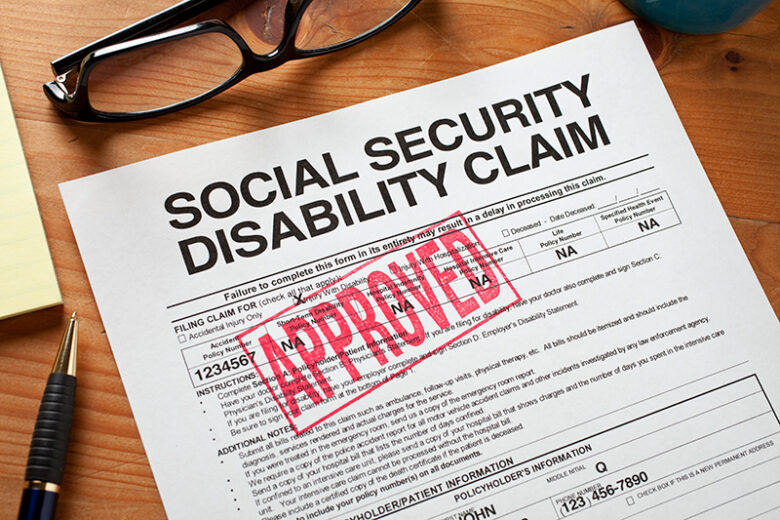As life unfolds, it occasionally throws us curveballs, leaving us grappling with unexpected circumstances. One such curveball is a long-term disability that can halt our careers and disrupt our financial stability. But, take heart! There are long-term disability benefits designed to provide assistance during these challenging times.
Navigating the complex terrain of these benefits, however, can seem like an uphill task. This comprehensive guide aims to make the process a little smoother for you, arming you with vital information and key insights to secure your benefits effectively. For more info, visit disability.ca.

Source: farmermorris.com
Contents
Types of Benefits
Diverse disability benefits exist, the specifics depending on the individual’s employment status and unique circumstances. A common source of assistance is employer-provided long-term insurance. This benefit offers a portion of your salary if you are unable to work due to an enduring health issue. A key feature of these plans is their coverage length, which can last years or even up until retirement, offering significant financial respite.
Those without access to employer coverage might rely on individual long-term disability insurance, purchased privately from an insurance company. This form of benefit shares similar characteristics with its employer-provided counterpart, but typically offers more flexibility and stability. Additionally, the Social Security Administration provides Social Security Disability Insurance (SSDI), a federally funded program for people who have a significant work history but are currently unable to work.
Eligibility Criteria for Benefits
Eligibility for long-term disability benefits hinges on several key factors. Fundamentally, you must be suffering from a disabling condition that prevents you from fulfilling your work responsibilities. Additionally, the disability must be expected to last at least a year or result in death. This requirement is common across most long-term insurance plans and the SSDI program.
However, each type of benefit carries specific eligibility requirements. Employer-provided and private insurance plans depend on the terms of the specific policy. These may include stipulations such as a waiting period before benefits kick in, known as the elimination period. SSDI, meanwhile, demands that applicants must have earned enough work credits, which are accrued over time through taxable work.

Source: griffinandjordan.com
Applying for Benefits
Embarking on the application process for long-term disability benefits necessitates preparation and attentiveness. Start by carefully examining your insurance policy or the SSDI program’s terms to comprehend your responsibilities. This includes understanding your rights, benefit amounts, and the duration of benefits. Here, legal counsel can be invaluable in clarifying complex language and helping you navigate the process.
Upon understanding your policy, initiate your claim. For insurance-based benefits, you’ll need to contact your insurance provider. If you’re applying for SSDI, you can do so online, by phone, or at your local Social Security office. It’s crucial to apply as soon as you become disabled, as the process can be lengthy, and delays can cause financial stress.
Documenting Your Disability
The key to a successful disability benefits application is comprehensive documentation. This process involves clearly demonstrating the nature of your disability, its impact on your ability to work, and its expected duration. Detailed medical records, including diagnoses, treatments, and prognoses, are essential components of this documentation.
Consider documenting your symptoms and their impact on your daily activities. This daily log can provide valuable evidence of the severity and enduring nature of your disability. Supplement this with any additional relevant evidence, such as statements from people who understand your condition and its implications, like family members or coworkers.

Source: disabilityattorneyaz.com
Gathering Medical Evidence
Medical evidence forms the cornerstone of your disability benefits application. It should contain precise information from your healthcare providers about your health condition, how it affects your ability to work, and its longevity. Clinical records, medical test results, and statements from medical professionals, detailing your symptoms and limitations, all constitute vital evidence.
Remember that this document should not merely provide evidence of your condition but also illustrate its impact on your work-related activities. This may include, for instance, your reduced capacity to lift objects, inability to remain seated for prolonged periods, or diminished cognitive functions, all tied directly to your medical condition.
The Role of Healthcare Providers
Healthcare providers play a pivotal role in the disability benefits application process. Beyond their essential function of diagnosing and treating your condition, they also provide crucial medical evidence to support your claim. Therefore, maintaining open communication with your healthcare providers about your intent to apply for disability benefits is vital.
These professionals can guide you through the medical documentation process. They can ensure your records adequately portray the severity and long-term nature of your condition. Additionally, they can provide supportive statements detailing your medical condition, limitations, and the expected trajectory of your disability.
Application Process
The benefits application process is an involved endeavor. After assembling your application, including medical evidence, documentation of your disability, and additional supportive materials, you submit it for review. For SSDI applications, the Social Security Administration handles this review, while insurance providers manage their respective claims.
Once submitted, be prepared for a waiting period while your application undergoes evaluation. This duration varies but can stretch into months, emphasizing the need for early application. Stay in touch with the entity reviewing your application to promptly respond to any requests for additional information, which can expedite the process.

Source: webaba.com
Dealing with Denials and Appeals
Unfortunately, not all applications for disability benefits are successful on the first attempt. If your claim is denied, don’t despair. You have the right to appeal the decision, a process that involves reviewing the reasons for denial, gathering additional evidence if needed, and resubmitting your claim.
To navigate this appeal process, it’s often helpful to seek the guidance of a disability benefits lawyer. They can help you understand why your claim was denied and what steps to take to improve your chances on appeal. It’s a challenging process, but with persistence and the right support, a denied claim can ultimately turn into an approved one.
Summary
Navigating the complex world of long-term disability benefits can feel daunting. But with patience, thorough documentation, and a clear understanding of the process, you can effectively secure the benefits you need. Remember, while the journey may be filled with paperwork and bureaucratic hurdles, the end goal – ensuring your financial stability during a challenging period – is well worth the effort. Use this comprehensive guide as a tool to help smooth the path and remember that you’re not alone; help is available as you navigate this terrain.
